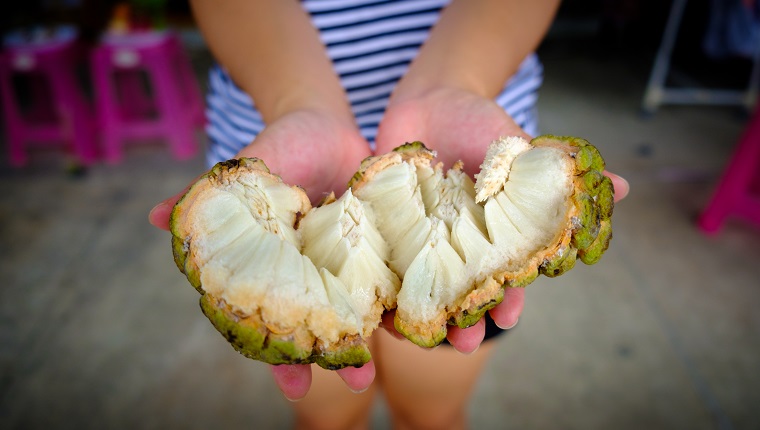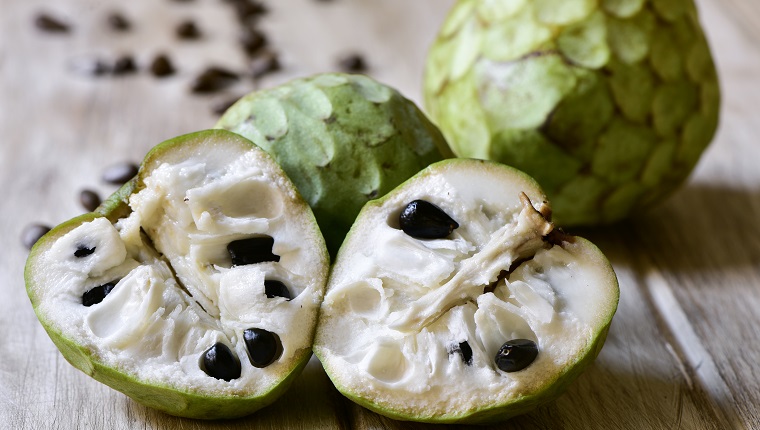For humans, cherimoya is a fruit that comes with several significant health benefits, but can dogs eat it too? Is cherimoya, also known as custard apple, safe for dogs to consume?
Unfortunately, the short answer is no; cherimoya is too big of a risk for dogs. In fact, it’s even a bit of a risk for humans, as well, as it requires such careful preparation. Both the seeds and skin of cherimoya contain toxic properties that are hazardous to both dogs and humans.
Of course, as humans with nimble fingers and YouTube instruction videos, we can deftly remove the dangers, for the most part. Plus, our immune systems will tolerate substantially more from trace toxins. However, it’s too big a risk to take with your dog.
As always, you must formally address all concerns on food products with a trusted veterinarian. Here’s what you should know about cherimoya and dogs.
Why Is Cherimoya Bad For Dogs?
When researching cherimoya for dog ingestion, the internet is a murky place. It’s so easy to become confused without steadfast answers from trustworthy entities.
Ultimately, though, what is out there and available says that the seeds and skin of the cherimoya fruit are toxic. They contain the neurotoxin annonacin, which can affect your brain and nervous system.
Research suggests that the entire fruit can actually contain the toxin, even the flesh. However, the concentrated amounts — the dangerous kind — are in the skin and seeds.
Additionally, others claim that the seeds contain cyanide, which is highly toxic for dogs.
That isn’t always an unavoidable problem. After all, there’s plenty of research about how parts of apricots are toxic for dogs; the pits, leaves, and stems contain cyanide. However, pits are far more easily removed than cherimoya seeds, and dogs can eat properly prepared apricots.
Given this balance of information, and the known toxicities of the fruit, the cherimoya is too great a risk for dogs. There are fruits far safer, which require far less work, such as blackberries.
What Should I Do If My Dog Eats Cherimoya?

There are plenty of health-related reasons why we humans might keep cherimoya in the house. When properly prepared and eaten in moderation, it provides immune support, massive amounts of vitamin B, and is very helpful for eye, digestive, and blood pressure health.
But, let’s say your pup gets into a place they shouldn’t and consumes cherimoya; seeds and all. What can you do?
Well, do what you should always do when potential toxicity arises — seek immediate veterinary care for your dog.
When it comes to cyanide, poisoning sets in quickly — usually within 15 to 20 minutes after consumption, says the Merck Veterinary Manual. If your dog gets into this fruit, be prompt and be vigilant, as you would with other toxic foods like chocolate or raisins.
If you’ve heard conflicting reports regarding cherimoya, you can always consult your veterinarian directly. They will always provide you with sound dietary advice.
Do you ever eat cherimoya at home? Are you careful to keep it out of your dog’s reach? Let us know in the comments below.





